Start Your Own Home Garden
With our comprehensive guide, you will learn everything you need to turn any space into a productive garden. Discover how to choose the ideal location, prepare the soil, design your garden, select the best crops, and take care of your plants for abundant harvests. Start your gardening adventure today!
Choosing the Ideal Location
Choosing the right location is crucial for the success of your garden. It should be an area that receives enough sunlight, has easy access to water, and features fertile, well-drained soil. A good location will ensure that plants grow healthy and productive.
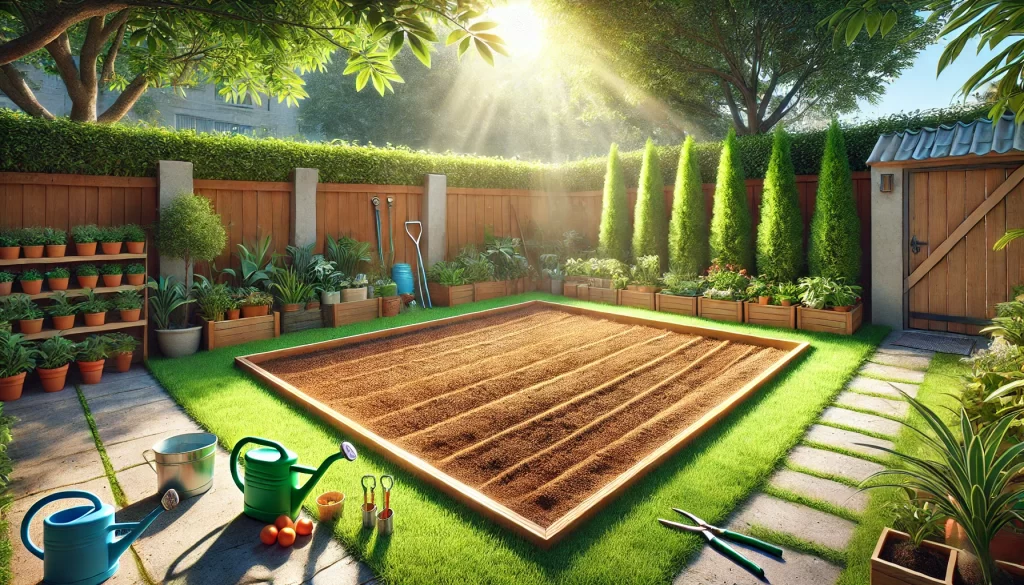
- Sunlight: Choose an area that receives at least 6 hours of direct sunlight per day. Sunlight is essential for healthy plant growth, as it facilitates photosynthesis and optimal crop development.
- Water Access: Ensure the location has easy access to water. Proper irrigation is essential to keep plants hydrated and promote robust growth.
- Space and Soil: Consider the available space to determine what type of garden you can create. Check that the soil is fertile and well-drained, which will allow roots to develop without issues and prevent water accumulation that could harm the plants.
Soil Preparation
Proper soil preparation is essential before planting. This includes clearing the area of rocks and weeds, enriching the soil with compost or organic fertilizer, and adjusting the pH according to the needs of the crops. Well-prepared soil will provide the necessary nutrients for plants to thrive.
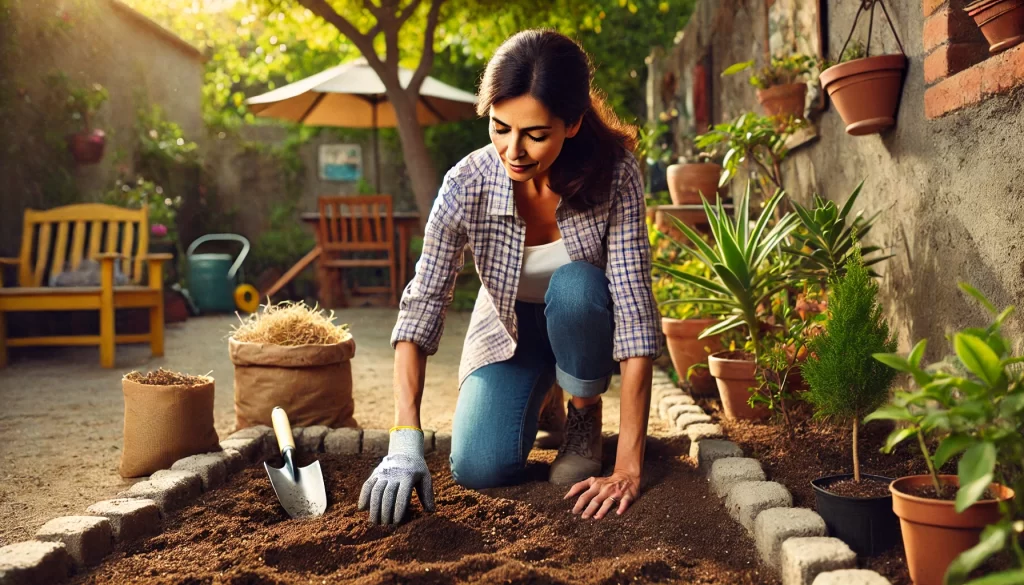
- Cleaning: Remove rocks, roots, and weeds from the chosen area. This step is crucial to ensure that plants don’t face competition for nutrients and space from the start.
- Soil Enrichment: Add compost or organic fertilizer to improve soil fertility. This will provide the plants with the necessary nutrients for healthy and vigorous growth.
- Soil pH: Check the soil pH to ensure it is in the optimal range for the crops you plan to plant. Adjusting the pH if needed can make a significant difference in the health and productivity of the garden.
Garden Design
The design of the garden should consider plant arrangement, crop rotation, and, if necessary, the construction of raised beds or the use of pots. A good design maximizes space usage, facilitates plant access, and ensures balanced and healthy growth.
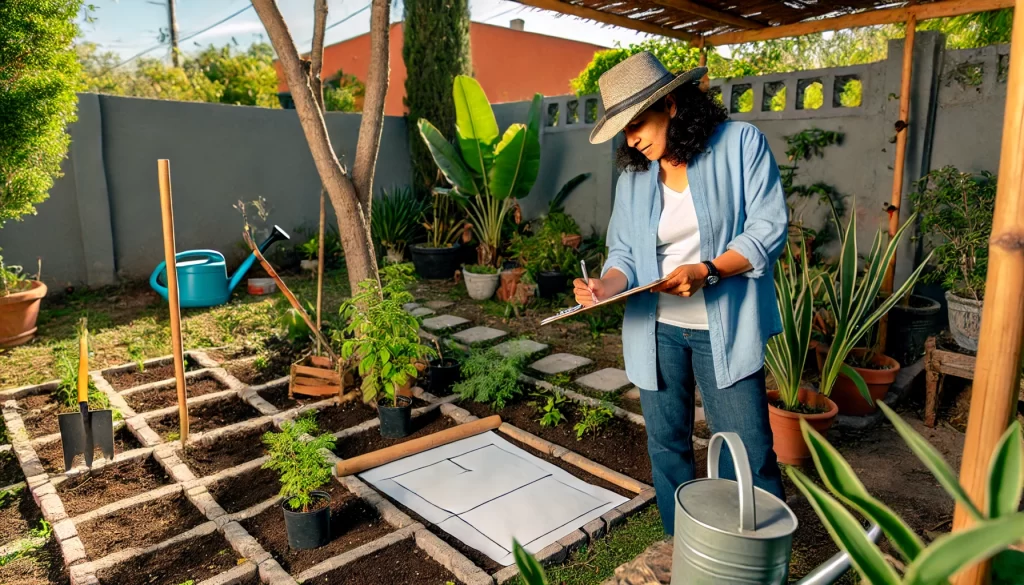
- Plant Distribution: Plan the layout of the plants considering their size and light needs. A well-thought-out design maximizes space usage and ensures each plant gets the right amount of light.
- Crop Rotation: Organize plants to facilitate crop rotation each season, which helps maintain soil health and reduces the incidence of pests and diseases.
- Raised Beds or Pots: If the soil is not suitable or you prefer additional control over growing conditions, consider building raised beds or using pots. This also helps with plant management and garden organization.
Crop Selection
Crop selection depends on the season, climate, and available space. It’s important to choose plants that adapt well to your garden’s conditions and benefit from being grown together. This ensures a diversified and productive garden.
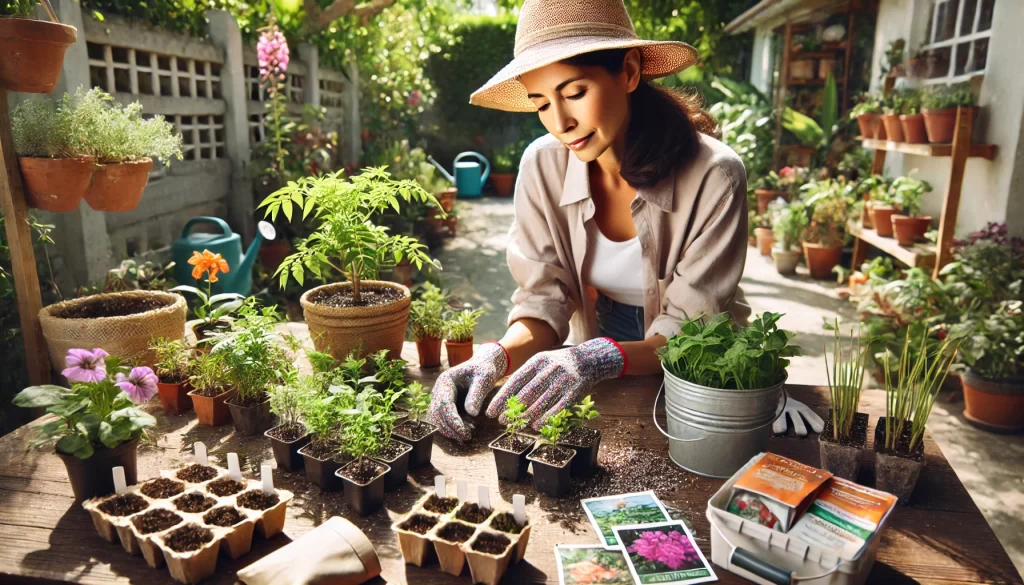
- Seasonal Crops: Choose plants that are suitable for the season and climate in your area. This increases the chances of success, as the plants will be in a conducive environment for growth.
- Companion Plants: Research plants that benefit each other when grown together. Companion planting can improve plant health and increase garden productivity.
- Crop Rotation: Do not plant the same crop in the same area consecutively. Crop rotation helps keep the soil fertile and reduces the risk of pests and diseases specific to certain crops.
Planting
Planting includes decisions about direct seeding or transplanting, as well as considering the depth and spacing of the plants. Following these recommendations helps the plants grow strong and healthy, avoiding competition issues and ensuring proper development.
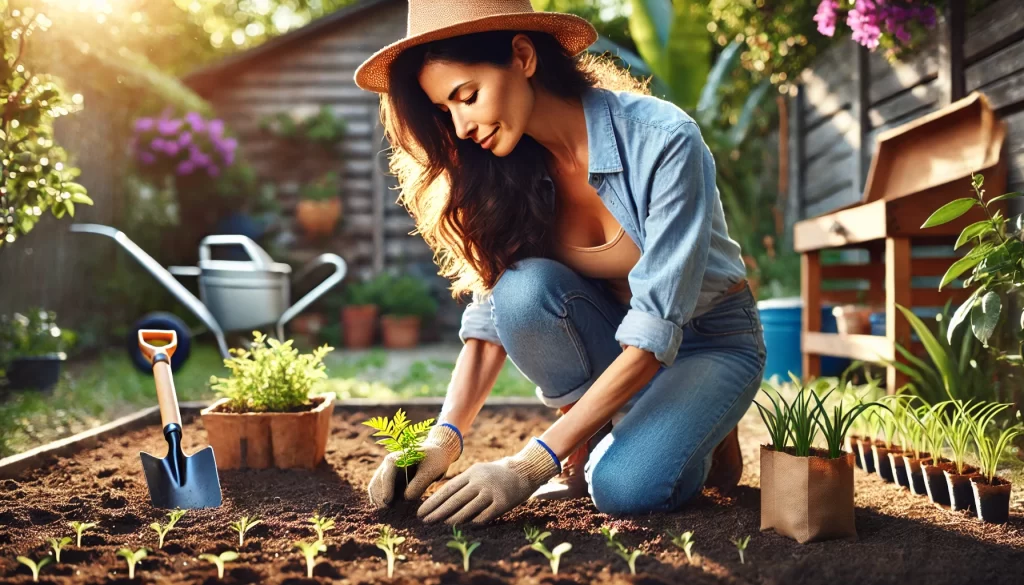
- Direct Seeding or Transplanting: Some plants are directly seeded in the ground, while others are started in seed trays and then transplanted into the garden. The choice depends on the characteristics of each crop and your garden’s conditions.
- Depth and Spacing: Follow the recommended depth and spacing indicated on the seeds or plants you acquire. This ensures the plants have the right amount of space to grow and develop without competition.
Watering and Maintenance
Proper watering and regular maintenance are essential for the success of the garden. This includes watering at the right times, applying mulch to conserve moisture, and fertilizing according to the plants’ specific needs. Good maintenance ensures the plants stay healthy and productive.
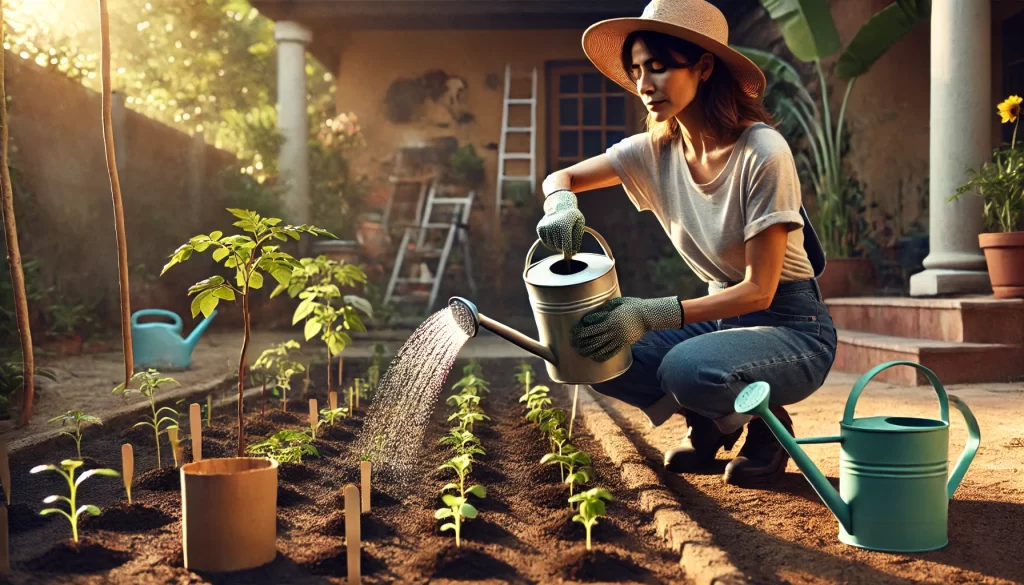
- Regular Watering: Water your garden regularly, preferably in the early morning or late afternoon. Proper watering keeps plants hydrated and prevents diseases caused by excessive moisture.
- Mulching: Apply a layer of mulch around the plants to conserve moisture, control weeds, and improve soil structure. Mulching also helps regulate soil temperature.
- Fertilizing: Fertilize your plants according to their specific needs. Organic fertilizers or compost are ideal for maintaining healthy and sustainable growth in the garden.
Pest and Disease Control
Keeping the garden free of pests and diseases is crucial for plant health. This can be achieved through regular monitoring, using organic remedies, and planting trap plants that repel harmful insects. Good control ensures that plants can grow without being affected by external factors.
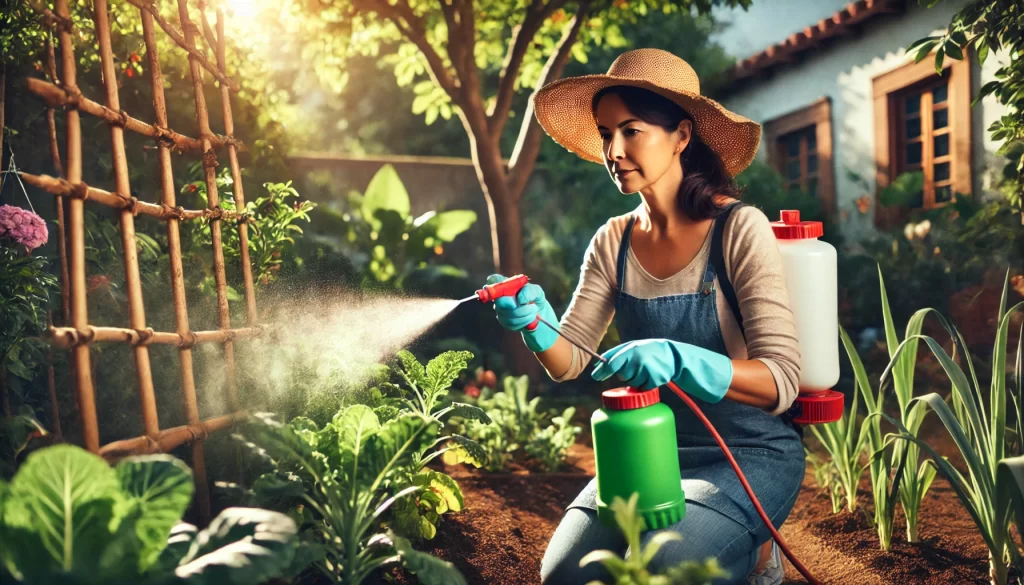
- Regular Monitoring: Inspect your plants regularly for signs of pests or diseases. Detecting issues early allows you to take corrective actions before they become a major problem.
- Organic Remedies: Use natural remedies to control pests, such as insecticidal soap or neem oil. These methods are less harmful to the environment and the health of your garden.
- Trap Plants: Grow plants that repel harmful insects near your main crops. These trap plants act as a natural barrier against pests.
Harvest
Harvesting is the time to reap the fruits of your labor. It’s important to do it at the right time to ensure the best taste and nutritional value. Proper post-harvest handling extends the freshness of the products and maximizes enjoyment.

- Harvest Time: Harvest crops at the right time for the best taste and nutritional value. Picking the products when they are at their peak ensures you get the most out of your effort.
- Post-Harvest Handling: Wash and store products properly to extend their freshness. Good post-harvest handling helps prevent quality loss and allows you to enjoy your crops for a longer time.
Rotation and Planning for the Next Season
After harvesting, it is essential to plan crop rotation and allow the soil to rest if necessary. Evaluating what worked well and what didn’t will help you improve planning for the next season, ensuring a progressively successful garden.
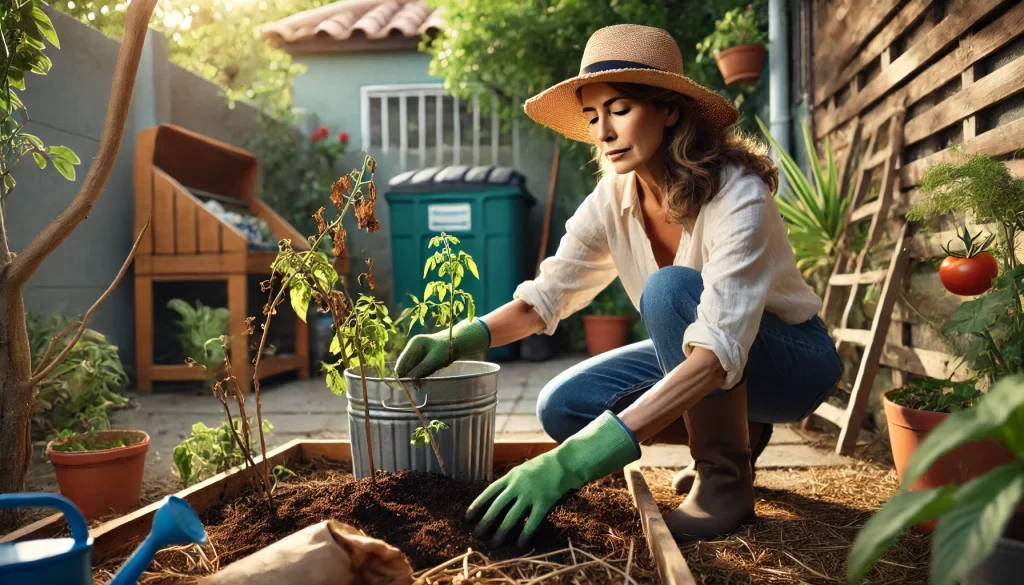
- Soil Rest: After harvesting, allow the soil to rest or plant cover crops to enrich it. This process helps maintain soil health in the long run.
- Planning: Evaluate what worked well and what didn’t in the previous season. Learning from experience will help you improve planning and garden management in future seasons.
Grow Your Own Garden with Sereniseed!
Explore USDA Certified Organic Vegetable Seeds by Sereniseed. This 10-variety pack includes basil, snap peas, broccoli, beans, jalapeños, tomatoes, lettuce, cucumbers, carrots, and more. 100% organic, non-GMO, and carefully stored to ensure top germination rates.
Buy Now and Start Growing! AgronoBlog – Agriculture Blog
AgronoBlog – Agriculture Blog